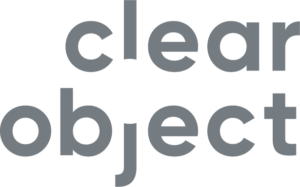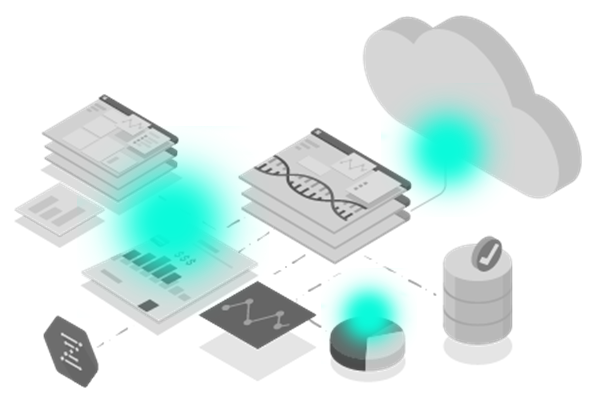For an industry that relies so heavily on technology, it’s surprising digital transformation in life sciences and healthcare hasn’t progressed further than it has, at least compared to industries like manufacturing and energy. Until recently, life sciences have been a step behind in implementing advanced digital technology and solutions such as IoT and artificial intelligence to enhance data analytics.
Speaking at Gartner’s 2018 global symposium and ITxpo, Gartner Senior Director and Analyst Mark Gilbert discussed why. Although life sciences companies and healthcare providers recognize the benefits of such technologies, Gilbert said, “a significant gap exists between their digital business goals and their ability to execute.” But he also added that, finally, executive leaders in all corners of life sciences were charging CIOs to guide new initiatives for business transformation and digital technology innovations.
One initiative at the top of many CIOs’ lists is how to manage and analyze data in volumes that are growing from big data to ginormous data. While not all this data is tied to life sciences and healthcare, consider the data that is. For just one example, every 7 months, genomics research alone doubles the amount of data it generates. And that’s a statistic from 2015 projected through 2025, meaning that amount is now likely much higher.
Whatever the data sources, it’s why Google views a “data problem” in many life sciences organizations as being a primary driver for their digital transformation. Google ties the needs for improved data analytics to a life sciences company’s ability to modernize research and development, accelerate clinical trials and testing, optimize manufacturing and distribution, improve value for patients, and even to empower sales and marketing.

Google Cloud’s “new” Life Sciences to process biomedical data
Life Sciences is new in name only, the product formerly having been called Google Genomics. For data analytics, Life Sciences enables healthcare organizations to process biomedical data at scale using Google Cloud Platform (GCP) as the foundation for data processing, storage and analysis. GCP is in line with Google’s findings that many life sciences organizations now have cloud initiatives for full-scale digital transformation. These organization are also turning to cloud solutions to help them manage expanding workloads and migrate digital technology resources that currently reside on-premise.
IoT and artificial intelligence to enhance data analytics
To close the tech capability gap that Gartner’s Mark Gilbert addressed, he and other analysts at Gartner say the deployment of digital technology platforms should be a top investment for any digital transformation in life sciences. “Healthcare providers have now recognized data and (data) analytics platforms as having the highest potential for competitive differentiation.” Gartner also emphasizes taking advantage of
IoT platforms and artificial intelligence (AI) in particular for data analytics, as do many healthcare digital transformation trends lists.
With IoT, the healthcare and life sciences industry as a whole can better collect and interpret data for various uses. Patient care naturally is one scenario, with IoT’s ability to collect real-time patient data via apps on smartphones and tablets and from sensors on wearable technologies. IoT-based data collection and data analytics have also propelled advances such as the bio-printing of cells, tissues and organs, DNA testing, and telemedicine.
For AI, its main beneficiary is big data and enabling life sciences organizations to more effectively manage and analyze it, from individual patients to entire patient populations. Combined with digital technology and cloud-based computing, AI also lends to predictive analytics that drive better decision making and outcomes. The adoption of these and other technologies for things such as electronic health records (EGRs) has heightened the use of predictive analysis to collate a patient’s entire medical history.

Data analytics for medical devices and diagnostics
On the medical device and diagnostics side, imagine a device maker implementing IoT-connected sensors in its hospital and lab equipment to detect potential issues before they occur. Data analytics based on historical data can help predict upcoming problems, and even tell a field service technician what the exact issue is and how to fix it before he or she shows up on-site.
In the case of Pacer Digital and it next-generation CryoIntelligence application (a ClearObject customer and project), IoT has helped the company improve how data is ingested from its cryofreezer units for high-level research in medical labs. Such research is dependent on the ability to generate visible patterns in data, which requires collecting and analyzing as much data as possible. Pacer Digital additionally uses the data from each cryofreezer unit for system troubleshooting and repairs. The upgraded CryoIntelligence app uses Google Cloud Datastore to store collected data; for the upgrade process for customers, the project used Google Cloud Dataflow to synchronize data from the existing application space to the new next-gen space.
In addition to solutions like Cloud Datastore and Cloud Dataflow, Google Cloud supports more than 50 offerings in all. Among those in the categories of computing and hosting, storage, networking, big data, and machine learning and AI are Smart Analytics-As-A-Service, Data Management-As-A-Service, Application Platform-As-A-Service, and Infrastructure-As-A-Service.
Intelligence makes Life Sciences different
Google has followed a roadmap of embedding intelligence in the Life Sciences solution that makes it easy to apply AI and IoT (plus machine learning) for the data analytics process. They’ve also designed Google Cloud to support whatever systems a life sciences organization relies on by making the cloud open and easy to use.
In effect, Life Sciences bridges the gap between any healthcare organization’s initiative to improve its digital technology and data analytics footprint and the ability to achieve it.
Contact Us
As a certified Google Cloud Partner, and in addition to IoT Engineering, Analytics and Connected Product Development, we’re experts at developing and implementing targeted data analytics strategies to get the most value from your data — including deploying and managing serverless cloud solutions for AI tools and end-to-end machine learning models.
ClearObject’s technology outlook for 2020
It’s all in our new whitepaper, “The Year of IoT and Machine Learning: 9 Data Driven Directions for 2020.” The paper is informative, it’s a quick read… and it’s free.

(Graphics: Google)
#lifesciences #dataanalytics #digitaltechnology

